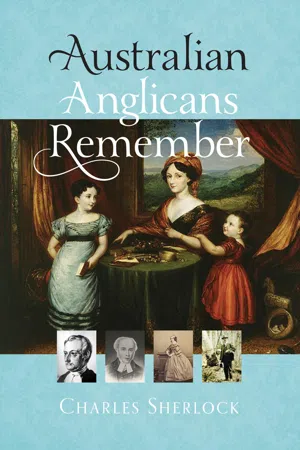![]()
January 1: The Naming and Circumcision of Jesus
The Circumcision of Christ in BCP.
The Naming and Circumcision of our Lord Jesus Christ in AAPB.
Why was the incarnate Word circumcised and named ‘Jesus’?
The naming and circumcision of a boy went together in Israel of old, a linking of particular significance for understanding the life and ministry of the Lord Jesus Christ.
In biblical times a person’s name said a lot about his/her character. So Isaac meant ‘laughing boy’, Sarai meant ‘princess’, and Jonathan and Elnathan meant ‘gift of God’. A change of name had considerable significance: thus Jacob meaning ‘trickster’ became Israel meaning ‘God-strengthened’ and Simon became Peter meaning ‘rock’.
Circumcision was the way by which a male infant, or a man joining Israel, was marked as belonging to the covenant that the Lord established with Abraham (Genesis 17:9–14; ). For a boy it was also when they received their name (cf Genesis 21:3–4). Jesus — the Greek transliteration of the Hebrew Joshua — means ‘rescuer, saviour’, marking him as one through whom God’s people would be saved from their sins (so Matthew 1:21).
Circumcision was a bodily sign that men of God rejected the phallic-centred, fertility-focused ways of life that predominated in the wider world. All Israel was called to ‘circumcise the foreskin of your hearts’ (Deuteronomy 10:16; Jeremiah 4:4), to live in accordance with the spirit of God’s law. This law provided that each male born into Israel would be circumcised on the eighth day (Leviticus 12:3) — a date which hinted at the boy beginning to take part in God’s new creation (cf Exodus 22:18–19; Leviticus 14:10, 23; 22:27).
Jesus was named and circumcised on the eighth day (Luke 2:21), thus marking him as a member of Israel, a Jewish male. Interestingly, his circumcision is the only direct evidence in the New Testament that he was male: apart from Ephesians 4:13 (aner, of the ascended Christ) he is elsewhere always referred to as ‘human’ (anthropos), most notably in the phrase ‘son of anthropos’.
A major question faced by the early Church was what to require of uncircumcised men — Gentiles — who responded to the Gospel. Despite the teaching of Genesis, the first Church Council, held in Jerusalem around 49AD, decided that this was not necessary, provided that such converts behaved in ways that did not breach Christian solidarity (Acts 15:1–29).
The apostle Paul in particular argued that requiring anything beyond faith in Christ — itself the gift of the Holy Spirit — contradicted the gospel of God’s free grace (cf Galatians 2–3). Christ’s ultimate ‘circumcision’ was his bloody death, which gained forgiveness for all — Jew or Gentile, slave or free, male and female (Galatians 3:28). Further, the abolition of the requirement of circumcision not only allowed Gentiles to enter God’s people directly, but also removed any barriers to women being in Christ together with men. Its spiritual significance remains, however: as Christ taught,” it is from the heart that all evils come” (Mark 7:21), so that believers need to continually cut off all ungodly thoughts and set their minds on what is true, good and worthwhile (Philippians 4:8).
Christ’s obedience saw his ministry transcend the cross, being raised by God to be the first fruits of the new creation, receiving the divine, unknowable Name (cf Exodus 3:13–17), marking him as Lord of all. As Paul wrote to the Philippians (2:9–11):
Therefore God also highly exalted him and gave him the name that is above every name, so that at the name of Jesus every knee should bend, in heaven and on earth and under the earth, and every tongue should confess that Jesus Christ is Lord, to the glory of God the Father.
This is the Name through whom we pray (John 14:13–14; 15:16; 16:23–26) and have eternal life (John 1:12; 20:31), the Name in which the apostles healed and preached (Acts 3:1–15).
‘The Naming and Circumcision of Jesus’ not only marks his entry into God’s people, but points to his opening the new creation to all believers through his atoning death — his ‘circumcision’ — for the sins of the whole world, from which God raised him to be Lord.
Resources for liturgical use
Service introduction
Christian faith looks to the blood of Jesus for healing — blood first shed when he was circumcised on the first day of his second week and named Jesus, that is, ‘saviour’. This is the Name through whom we pray, have eternal life, the Name in which the apostles healed and preached.
Sentences
God spoke of old by the prophets, but in these last days has spoken to us by a Son.
Hebrews 1:1–2
The angel said to Joseph, “The child conceived in Mary is from the Holy Spirit. She will bear a son, and you are to name him Jesus, for he will save his people from their sins.”
Matthew 1:20–21
Prayer of the day
God our Father,
you gave to your incarnate Son the name of Jesus
to be a sign of our salvation.
May every tongue confess
that he, who for our sake became obedient to the law,
is both Lord and Christ,
to your eternal glory;
for he now lives and reigns with you and the Holy Spirit,
one God, for ever and ever. Amen.
or
Christ our brother,
in you there is neither Jew nor Gentile,
neither male nor female,
yet you received the mark of the covenant,
and took upon yourself
the precious burden of the law.
May we so accept in our bodies
our own particular struggle and promise,
that we also may break down barriers,
in your name. Amen.
Readings
| Year One (daily cycle) | |
| Morning Prayer: | Psalm 113 |
| Genesis 17:1–13 |
| Colossians 3:12–17 |
| Evening Prayer: | Psalm 113 |
| Exodus 3:13–17 |
| Colossians 2:8–15 |
| Year Two (daily cycle) | |
| Morning Prayer: | Psalm 115 |
...
